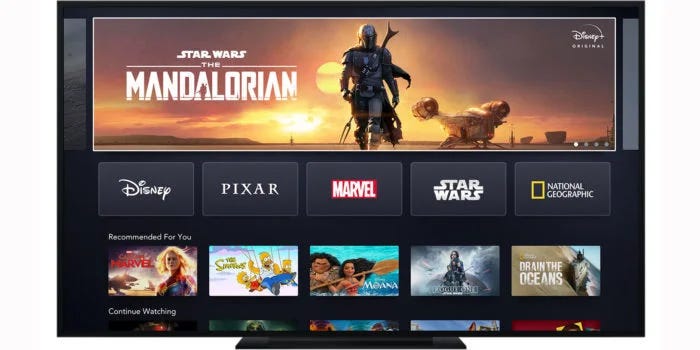Disney+'s winning formula
Following $11 billion in losses over five years, the streaming platform has now turned a profit
In the streaming battle, Disney is now betting on… children's nursery rhymes. According to Bloomberg, the creator of Mickey Mouse has just secured the streaming rights to CoComelon for several tens of millions of dollars per year. This animated series aimed at young children is a YouTube phenomenon, with nearly 200 million subscribers and around two billion videos viewed each month.
It is also among the most-watched shows on Netflix, even though its viewership dropped significantly last year. The thirty one-hour episodes already produced will join the Disney+ catalog starting in 2027. The goal is to strengthen the platform’s position in this strategic segment, which notably helps reduce cancellations, and maintain its current positive momentum.
Heavy Losses
Launched in 2019, Disney+ had a spectacular start, attracting over 70 million subscribers in just one year. Its success was driven by a rich content library and an affordable price, half that of Netflix. It also benefited from the COVID-19 pandemic. Since then, growth has slowed considerably, largely due to the proliferation of streaming options. As of the end of March, the service had 126 million subscribers worldwide, compared to over 300 million for its main competitor.
Disney+ has also racked up heavy losses: more than $11 billion in just five years. In order to gain subscribers, the company invested heavily in films and series made exclusively for streaming, which couldn’t be monetized in theaters or on television. Positive results are only now beginning to emerge.
At the end of 2024, Disney's streaming division, which also includes Hulu, reported its first operating profits. In the first quarter, those profits amounted to $336 million—still ten times less than Netflix. To reach profitability, the company cut back on marketing and content spending.
Children are a loyal audience
It also launched an ad-supported subscription tier. This not only helped attract new subscribers and retain those considering cancellation, but it’s also more profitable: the advertising revenue it generates exceeds the price difference with the standard plan. Additionally, Disney borrowed some of Netflix's successful strategies. It significantly raised prices without seeing a major drop in subscribers. And it launched a crackdown on account sharing.
Like Netflix’s other competitors, Disney still faces consumer volatility, with users subscribing and unsubscribing from different services depending on the arrival of new shows or movies. Acquiring customers is no longer the sole priority: retention has become just as crucial. In this context, children represent a loyal audience that often consumes the same content repeatedly, making them less prone to switching.
Leveraging its animated content catalog, Disney+ positioned itself from the start as an essential offering for families. However, recent hit franchises are not necessarily coming from its own studios. With the rights to CoComelon, Disney strengthens its offering, just as it did with Bluey, the most popular animated series in streaming.




